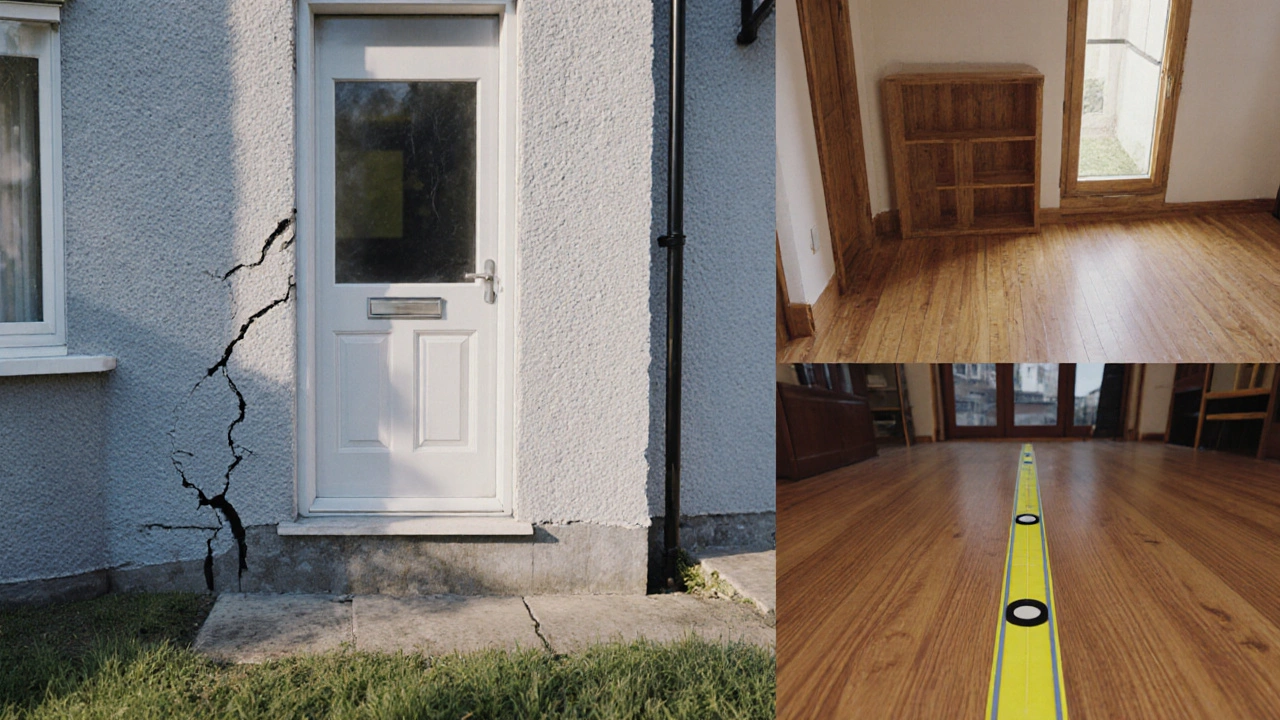Learn how to identify, diagnose, and fix major foundation issues. Get clear signs, causes, repair options, and a maintenance checklist to protect your home.
Foundation Issues: Spot Problems Early, Fix Them Right
When your house starts to shift, it feels like the whole world is moving under you. Cracks in walls, uneven floors, or doors that stick are more than annoyances – they’re signs your foundation may be in trouble. Ignoring them can lead to costly repairs and even safety hazards.
How to Spot Early Warning Signs
Start with the basics. Look for horizontal cracks in basement walls, stair-step cracks in brickwork, or gaps around window frames. Notice if floors feel bouncy or if there’s a noticeable slope when you walk across a room. Small water stains on the foundation wall often mean moisture is seeping in, which can accelerate settlement.
Don’t forget the exterior. If you see doors that no longer close properly or windows that shift when you open them, the frame might be moving with the foundation. A simple level on the floor can reveal a tilt of just a few millimetres – enough to indicate a problem.
Choosing the Right Repair Approach
Once you’ve identified an issue, it’s time to decide how to fix it. Minor settlement can sometimes be addressed with piering – steel posts driven deep into stable soil to hold the house up. For larger cracks, epoxy injection fills gaps and restores strength.
Major foundation repair often involves a combination of methods: underpinning, wall anchors, and drainage improvements. Underpinning adds new support below the existing footings, while wall anchors pull bowing walls back into place. Proper drainage, such as French drains, keeps water away from the foundation and reduces future movement.
Before you sign off on any work, get at least two quotes from reputable contractors. Ask for proof of insurance, references, and details on the warranty they offer. A solid contractor will explain the process in plain language and show you before‑and‑after photos of similar jobs.
Don’t overlook insurance. Many homeowners policies exclude foundation repairs unless water damage caused the issue. Check your policy’s fine print for “broken pipes under the foundation” clauses and know what’s covered. If you’re unsure, call your insurer and ask specifically about foundation repair exclusions.
For those considering a new build or major extension, think about soil testing early on. A geotechnical report will tell you if the ground can support the added load or if you need extra reinforcement from the start, saving you headaches later.
In summary, keep an eye on cracks, uneven floors, and sticking doors. Act fast, choose the right repair method, and verify insurance coverage. A proactive approach protects your home’s value and keeps your family safe.
Wondering if your house insurance covers foundation problems? This article breaks down what insurance actually protects when your home's foundation takes a hit, what it usually excludes, and the sneaky scenarios that might surprise you. We’ll show you the biggest misconceptions, offer tips to spot trouble before it gets expensive, and share advice for arguing your case with an insurer. By the end, you'll know exactly what to expect if cracks show up in your home—and what to do next.

